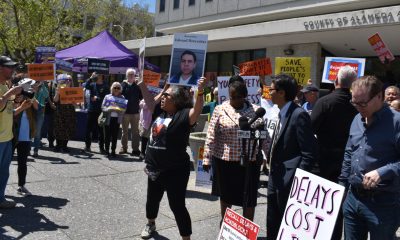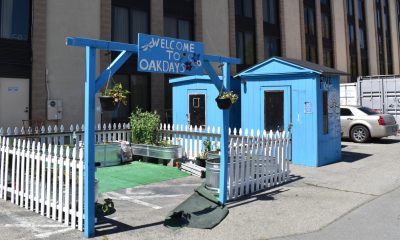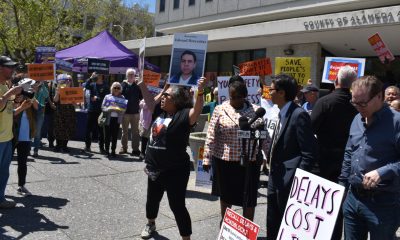California Black Media
California Black Media, Ethnic Media Services, Host Award Show and Conference
The Ethnic Media Conference Awards and Expo took place at the Kimpton-Sawyer Hotel in downtown Sacramento on Aug. 31. The event celebrated the work of journalists, podcasters, photojournalists, and investigative reporters whose contributions have been published by media outlets serving ethnic audiences across California.
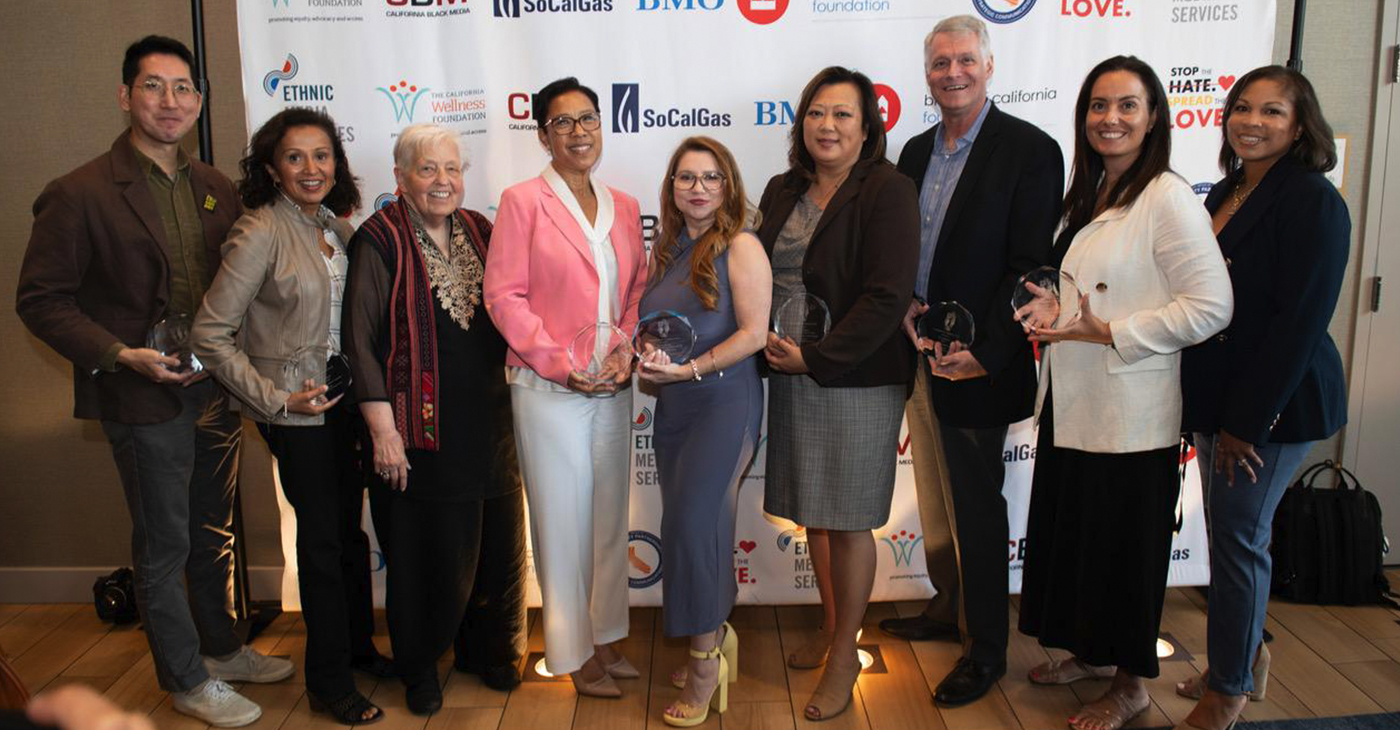
By Antonio Ray Harvey
California Black Media
The Ethnic Media Conference Awards and Expo took place at the Kimpton-Sawyer Hotel in downtown Sacramento on Aug. 31.
The event celebrated the work of journalists, podcasters, photojournalists, and investigative reporters whose contributions have been published by media outlets serving ethnic audiences across California.
The awards ceremony, sponsored by Ethnic Media Services and California Black Media, recognized winners selected from over 300 entries republished between January 1 and December 31, 2022.
“We had more awards, we had more submissions than ever, and we had judges saying this was the best we’ve ever seen. Now, that is against the odds of remarkable,” said Sandy Close, Ethnic Media Services (EMS) executive director.
In all, 26 writers, communications specialists, educators, playwrights, and publishers from across the state served as the judges. The award categories were: Breaking news, commentaries, explanatory analyses, feature reports, and photography.
The Ethnic Media Conference Awards and Expo was an all-day event attended by over 300 journalists, publishers, elected officials, business leaders, and others.
Secretary of State Shirley N. Weber and U.S. Census Director Robert L. Santos opened the conference with messages that underscored the importance and power of ethnic media in California.
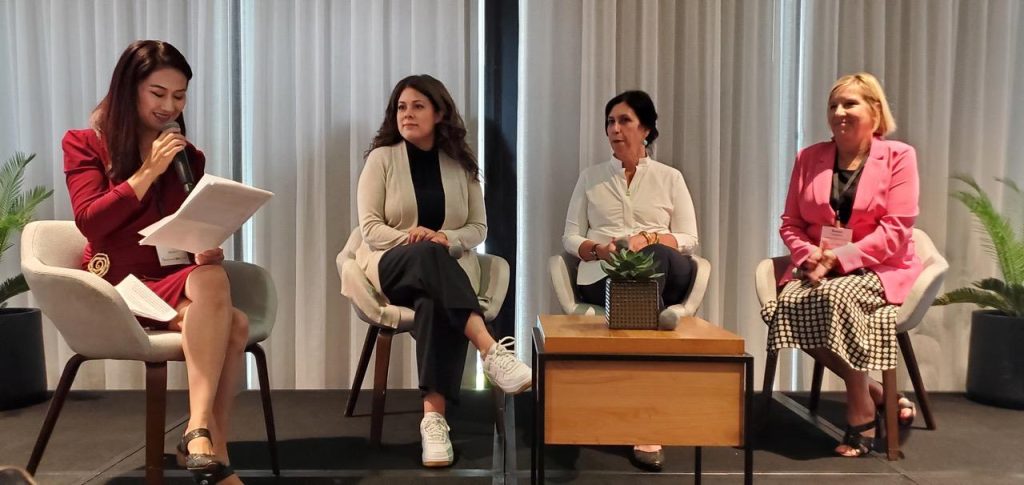
Diana Ding, Ding Ding TV, moderated a panel with Maricela Rodriguez, Senior Advisor for Civic Engagement and Strategic Partnerships Office of the Governor, Michelle Bass, director of the Department of Health Care Services, and Susan DeMarios, director of California Department of Aging. Photo by Robert Maryland CBM.
“California is the most diverse state in this nation, and It’s reflected in this room,” said Weber. “It’s reflected in our relationships with each other, and it’s reflected in our values. We will always celebrate that.”
California Legislative Black Caucus (CLBC) Chair Assemblymember Lori D. Wilson (D-Suisun City) and CLBC’s vice chair, Sen. Steven Bradford (D-Inglewood) made appearances at the event. State Controller Malia Cohen was the guest speaker at the awards ceremony and Secretary of Transportation Toks Omishakin participated in a plenary session.
Three plenary sessions were held. The breakout meetings were designed to discuss pressing statewide issues and how to develop public awareness campaigns that resonate with and engage all communities.
Rick L. Callender, the president of the California/Hawaii NAACP State Conference, spoke on behalf of Community-Based Organizations (CBOs) about how ethnic media covers issues that the mainstream media often overlook.
“If we cannot rely on the ethnic media and the Black press to do exactly what they are doing, to continue to report on what’s going on out there, or if we cannot partner with the ethnic media in the ways that we have; we won’t have anyone telling our stories. We need a strong, funded ethnic media,” Callender said.
“I know when I was listening to the folks from the state, we talked about the $90 million that was put into the community. Well, that’s excellent but I need to make sure that these dollars are getting to our ethnic media,” Callender added.
The final session before the presentation of awards was a Reporters Roundtable. A diverse group of journalists discussed the challenges of breaking the silence around community taboos and other sensitive issues that sometimes are left uncovered.
Ethnic media outlets are designed to cater to audiences defined by characteristics such as race, ethnic origin, religious affiliation, or gender identity.
Pan-ethnic media outlets target multiple ethnic audiences (such as pan-Asian Americans and Pacific Islanders, pan African diaspora, pan-immigrant, pan people-of-color, pan LGBTQ+).
Integrated into the Ethnic Media Conference Awards and Expo was the Stop the Hate Campaign (STH). This campaign facilitates cooperation between leaders of community-based organizations and ethnic media to address inter-ethnic tensions and help communities heal from hate.
Authorized by the California Department of Social Services (CDSS), the STH program provides funding to qualified nonprofit organizations. These organizations offer support and services to victims and survivors of hate incidents and hate crimes, as well as their families. The program also promotes crime prevention measures.
The sponsors of the Ethnic Media Conference Awards and Expo were: Pacific Gas and Electric; BMO; SoCalGas; the California Wellness Foundation; the California Newspaper Publishers Association; Stop the Hate, Spread the Love; and Blue Shield California Foundation.
“Every time we come together like this, representing Black-owned and other Ethnic-owned media in California, we display the power we have to effect change in our communities and in our state government,” said Regina Wilson, executive director, California Black Media.
“The work we do in our communities is based on trust we have earned, commitment we have shown and relationships we have built over decades,” Wilson said. “Organizations can’t just show up, slap an ‘ethnic’ name on a media company and claim that they are serving our state’s diverse communities.”
Activism
Oakland Post: Week of May 8 – 14, 2024
The printed Weekly Edition of the Oakland Post: Week of May May 8 – 14, 2024
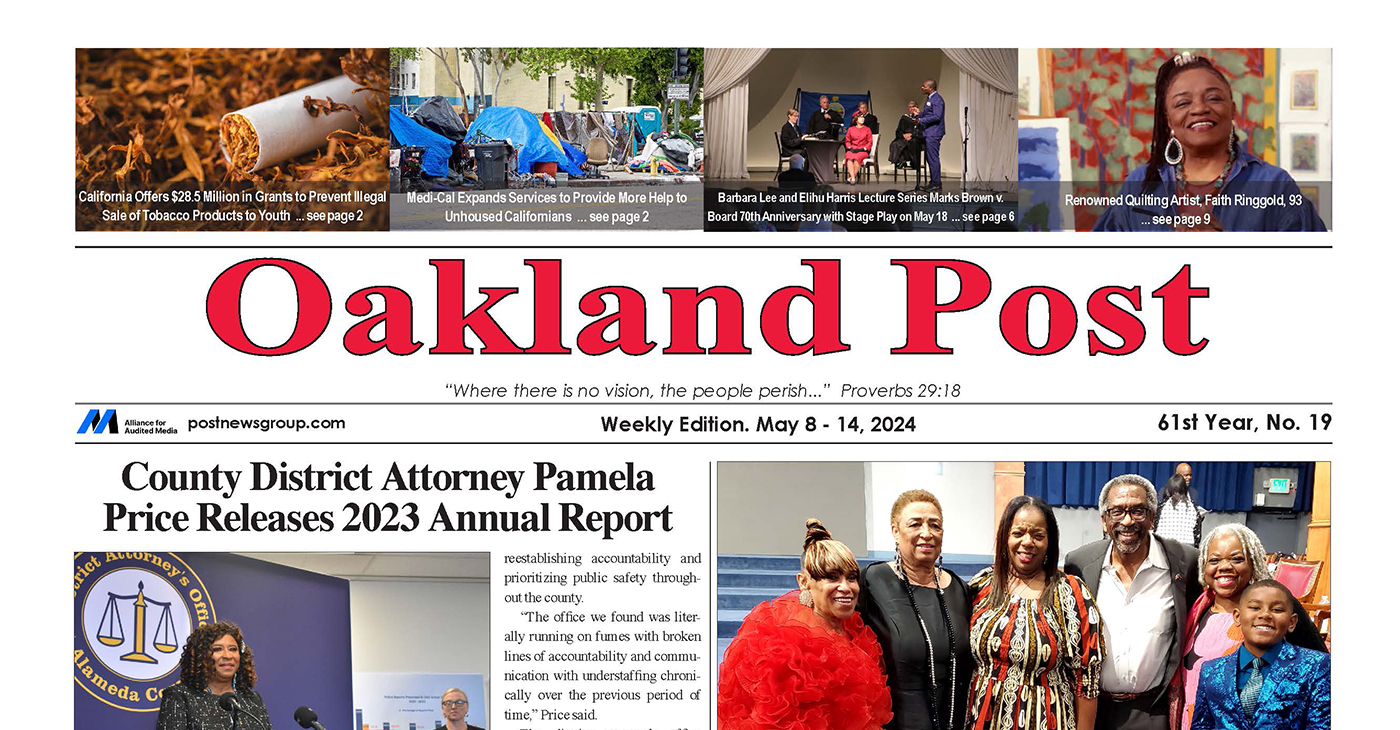
To enlarge your view of this issue, use the slider, magnifying glass icon or full page icon in the lower right corner of the browser window. ![]()
California Black Media
Cinco De Mayo: Five Interesting Facts You Should Know About the Popular Mexican American Holiday
To explore the historical significance of Cinco De Mayo, we step back to the origins of the commemoration, share how some Mexican American Californians regard it and trace how it has morphed into the celebrations we see today.
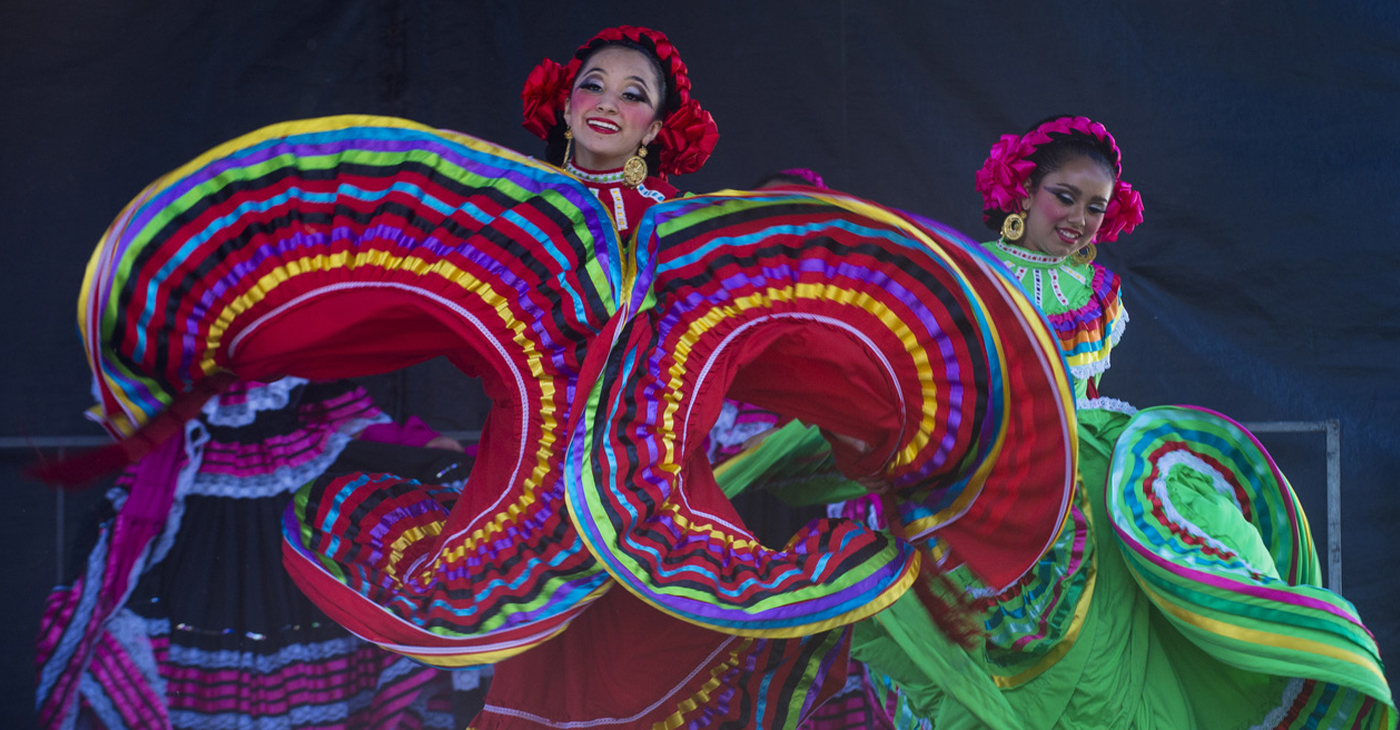
By Edward Henderson, California Black Media
To explore the historical significance of Cinco De Mayo, we step back to the origins of the commemoration, share how some Mexican American Californians regard it and trace how it has morphed into the celebrations we see today.
Celebrations in the United States began in 1862 in Columbia, California, a small town located in the foothills of the Sierra Nevada in Tolumne County, according to that town’s website.
Today, millions of Americans celebrate Cinco De Mayo annually with 120 official celebrations organized across the United States.
This day has become a cultural point of pride for Mexican Americans and other Latino communities in the United States. It serves as a time to affirm and celebrate their cultures with other Americans of all backgrounds as they highlight their contributions to American history and society.
Joseph Soltero, a Mexican American living in Escondido, shared his perspective on Cinco de Mayo with California Black Media. He learned about Cinco De Mayo from his grandfather and talked about the extent to which his family and San Diego County community celebrate the holiday.
“We knew September 16 was really Mexican Independence Day, but kids in my school would always mistake Cinco De Mayo as our Independence Day. [Cinco De Mayo] is not really even a Mexican holiday,” said Soltero. “It’s something people do to have an excuse to buy drinks, have fun and spend a little money at taco shops.”
Like Soltero, many Mexican Americans (and other Latino Californians) do not take the support and solidarity they receive from people of other races on Cinco De Mayo for granted. They also appreciate when people take the time to learn about the cultural significance of the day and avoid some of the cultural tropes that can easily whisper undertones of racism.
To help raise your awareness about the origins and cultural significance of the day, here are 5 little known facts about Cinco De Mayo:
- Cinco De Mayo is not Mexican Independence Day. It is the anniversary of the Battle of Puebla. This military victory on May 5, 1862, over the French forces of Napoleon III was hailed as a symbol for Mexican resistance to foreign influence.
- The holiday was not given much historical significance outside of Puebla, and it has not been celebrated on a large scale in Mexico. However, during the Civil War, Mexican Americans in California, Oregon and Nevada who supported the Union drew inspiration from the victory over the French-backed Confederate forces.
- The Chicano civil rights movement in the 1940s gave a new energy to celebration of the holiday in the United Sates as a symbol of national pride.
- In the 1980s and 1990s, beer companies’ marketing strategies targeted Mexican Americans by encouraging them to celebrate their heritage – and Cinco De Mayo –with Coronas, Bud Light, and Dos Equis. This created the perceived connection between Cinco De Mayo, alcohol, and merrymaking.
- Los Angeles hosts the largest Cinco De Mayo celebration in the country.
As we join Mexican American Californians to celebrate Cinco De Mayo next week, let’s deepen our cultural understanding.
Let’s use this occasion to commit to learning more about our neighbors, colleagues and friends of other races and ethnicities.
This resource is supported in whole or in part by funding provided by the State of California, administered by the California State Library in partnership with the California Department of Social Services and the California Commission on Asian and Pacific Islander American Affairs as part of the Stop the Hate program. To report a hate incident or hate crime and get support, go to CA vs Hate.
Antonio Ray Harvey
Working Group: More Entry-Level Homes Could Help Solve Housing Crisis
The Community Housing Working Group hosted a briefing on April 23 at Cafeteria 15L in Sacramento. Discussions focused on how the housing crisis in California affects Black and Brown communities and explored ways to provide low-income families and individuals with affordable housing.
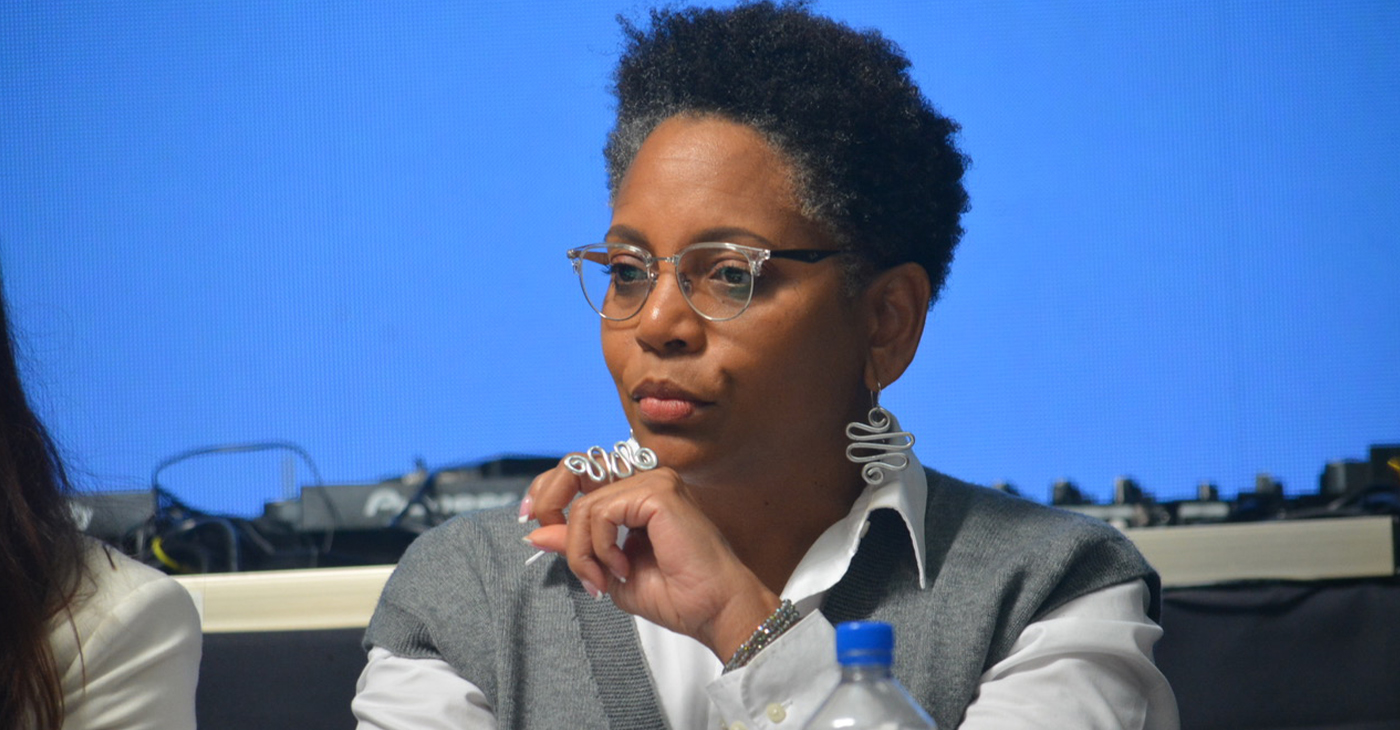
By Antonio Ray Harvey, California Black Media
The Community Housing Working Group hosted a briefing on April 23 at Cafeteria 15L in Sacramento. Discussions focused on how the housing crisis in California affects Black and Brown communities and explored ways to provide low-income families and individuals with affordable housing.
Tia Boatman Patterson, CEO and President of the California Communities Reinvestment Corporation, said “entry-level housing” is not available as it was in the past, adding that affordable units were a major point of entry into homeownership for many families in the Black community.
“My mother bought her first house when I was in junior high. It was an 850-square foot, two-bedroom and one-bathroom house in 1978. That house cost $30,000,” Boatman-Patterson said.
“A woman working part-time at JCPenney was able to afford that house. We don’t build these types of housing now. We do not build entry-level homeownership,” she added.
The Community Housing Working Group is a collection of diverse community organizations from across California working together to address housing challenges in their communities. The organization believes that solving the affordable housing crisis will require creating enough smaller, lower-cost, multi-family homes located near jobs, transit, and good schools.
The briefing included a panel discussion titled, “Exclusionary Zoning: A Look Back and a Path Forward.” Boatman-Patterson participated in that session along with Henry “Hank” Levy, Treasurer-Tax Collector for Alameda County, and Noerena Limón, consultant, Unidos U.S., and Board Member of California Housing Finance Agency.
Boatman-Patterson, a former Associate Director for Housing, Treasury and Commerce in the Office of Management and Budget for the Biden Administration, started her presentation by highlighting how exclusionary single-family zoning is contributing to continued segregation of California communities.
She said that single-family zoning originated in the Bay Area city of Berkeley in 1916.
“By creating single-family zoning and having fenced-off communities, you were able to exclude the ‘others,’” Boatman-Patterson said. “It really was a method to exclude — what they called ‘economic segregation’ — but that was a guise for racial segregation. Single-family zoning, along with redlining, became a systemic approach to exclude based on affordability.”
Title VIII of the federal Civil Rights Act of 1968 — commonly known as the Fair Housing Act of 1968 – is the U.S. federal legislation that protects individuals and families from discrimination in the sale, rental, and financing of housing. It was passed to open the doors to affordable housing.
In 1968, 65.9% of White families were homeowners, a rate that was 25% higher than the 41.1% of Black families that owned their homes, according to National Low-Income Housing Coalition. Today, those figures have hardly changed in the Black community, although White homeownership has increased five percentage points to 71.1%.
Boatman Patterson said the rate has not changed in Black and Brown communities because financing for affordable entry-level homes is almost nonexistent. The homeownership disparities contribute to the disturbing racial wealth gap in the nation, according to the National Low-Income Housing Coalition’s October 2018 report.
“We really must align the financing with the actual building of units, which we haven’t necessarily done. Because of this misalignment, I think we continue to see problems,” Boatman-Patterson said.
-

 Community4 weeks ago
Community4 weeks agoFinancial Assistance Bill for Descendants of Enslaved Persons to Help Them Purchase, Own, or Maintain a Home
-

 City Government1 week ago
City Government1 week agoCourt Throws Out Law That Allowed Californians to Build Duplexes, Triplexes and RDUs on Their Properties
-

 Activism2 weeks ago
Activism2 weeks agoOakland Post: Week of April 24 – 30, 2024
-

 Business4 weeks ago
Business4 weeks agoV.P. Kamala Harris: Americans With Criminal Records Will Soon Be Eligible for SBA Loans
-

 Community4 weeks ago
Community4 weeks agoAG Bonta Says Oakland School Leaders Should Comply with State Laws to Avoid ‘Disparate Harm’ When Closing or Merging Schools
-

 Community3 weeks ago
Community3 weeks agoRichmond Nonprofit Helps Ex-Felons Get Back on Their Feet
-

 Community3 weeks ago
Community3 weeks agoOakland WNBA Player to be Inducted Into Hall of Fame
-

 Community3 weeks ago
Community3 weeks agoRPAL to Rename Technology Center for Retired Police Captain Arthur Lee Johnson

